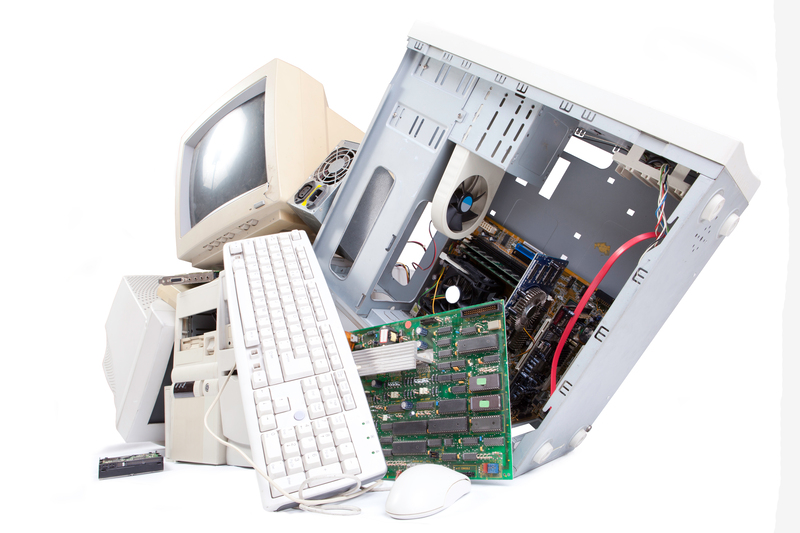Office Waste Reduction Strategies
Posted on 06/03/2025
In today's fast-paced business environment, reducing office waste isn't just about being eco-friendly; it's also a smart business practice. Reducing waste can result in significant cost savings, improved employee morale, and a stronger corporate image. This article explores various strategies to help offices minimize waste effectively.
Understanding the Sources of Office Waste
Before implementing any waste reduction strategies, it's essential to understand where waste originates within your office. Predominant sources include paper, office supplies, electronic waste, and food waste.
Paper Waste: Despite the digital revolution, offices still rely heavily on paper. From printing documents to disposable notebooks, paper waste is a significant component of office waste.
Office Supplies: Pens, staplers, and other office supplies contribute substantially to waste. Many of these items are either non-recyclable or end up being discarded unnecessarily.
Electronic Waste: With rapid technological advancements, electronic devices quickly become obsolete. Old computers, printers, and other electronic devices constitute a large portion of office waste.
Food Waste: In offices where employees bring their own meals or order takeout, food packaging and leftover food can add to the waste problem.

Implementing a Comprehensive Waste Reduction Plan
After identifying the sources of waste in your office, the next step is to develop and implement a comprehensive waste reduction plan. Here are some practical steps to follow:
1. Conduct a Waste Audit
Begin with a waste audit to understand the types and quantities of waste your office generates. This will help in identifying the key areas where waste reduction efforts should be targeted.
2. Promote a Paperless Office
Transitioning to a paperless office can significantly reduce paper waste. Encourage the use of digital documents and electronic signatures. Utilize cloud storage solutions like Google Drive or Dropbox for file sharing and collaboration.
- Educate employees about digital tools and their benefits.
- Set up shared electronic folders to reduce the need for printing.
- Adopt e-billing and e-statements to minimize paper billing.
3. Implement Recycling Programs
Set up a robust recycling program within the office. Ensure that recycling bins are easily accessible and clearly labeled.
- Recycle paper, plastics, and metal waste.
- Partner with electronic waste recycling companies for proper disposal of old electronics.
- Organize regular training sessions to educate employees about recycling protocols.
4. Opt for Sustainable Office Supplies
Choose office supplies made from recycled materials. Encourage the use of refillable pens and markers. Buy in bulk to reduce packaging waste and opt for suppliers who use minimal and eco-friendly packaging.
- Implement a reuse policy for office supplies.
- Encourage employees to return used items for proper recycling.
5. Reduce Food and Packaging Waste
Encourage employees to bring their own reusable containers for meals. Set up a composting program for organic waste. Opt for kitchen supplies, such as plates and cutlery, that are reusable rather than disposable.
- Promote practices like meal prepping to minimize food waste.
- Work with local vendors to ensure that food packaging is biodegradable or recyclable.
6. Promote a Culture of Sustainability
Instilling a culture of sustainability in the office is crucial for long-term success. Make it a part of the company's core values and ensure that these values are reflected in everyday operations.
- Encourage employees to participate in sustainability initiatives.
- Organize workshops and events focused on waste reduction.
- Share success stories and progress reports to highlight the impact of waste reduction efforts.
Leveraging Technology for Waste Reduction
Technology can play a significant role in reducing office waste. From modern communication tools to advanced recycling solutions, leveraging technology can make waste reduction more manageable and effective.
Use Digital Communication Tools
Adopt communication tools such as Slack, Microsoft Teams, or Zoom to reduce the need for printed memos and face-to-face meetings, which often involve travel and additional waste.
Advanced Recycling Solutions
Invest in smart recycling bins that can sort waste automatically. These bins use sensors and AI to differentiate between recyclable and non-recyclable waste, making the recycling process more efficient.

Smart Office Solutions
Utilize smart office solutions that monitor resource usage and optimize supply chains, reducing unnecessary purchases and waste. For example, smart lighting systems can minimize energy waste, while inventory management software can track and manage office supplies more effectively.
Conclusion
Office waste reduction is an ongoing effort that requires a comprehensive approach. By understanding the sources of waste, implementing effective strategies, and leveraging technology, offices can significantly reduce their environmental footprint. Promoting a culture of sustainability among employees and regularly reviewing and updating waste reduction plans can ensure lasting success.
Reducing office waste is not only beneficial for the environment but also for the overall efficiency and profitability of the business. With thoughtful planning and continued commitment, any office can achieve significant waste reduction while setting an example for others to follow.










